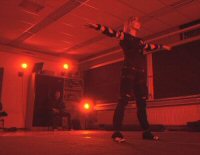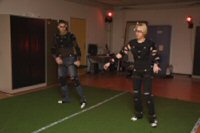Download our regular contributions to Control Magazine.
Issue 30, March 2012
Issue 29, January 2012
Issue 28, December 2011
Issue 27, November 2011
Issue 26, August 2011
Issue 25, July 2011
Issue 24, April 2011
Issue 23, February 2011
Issue 22, January 2011
Issue 21, November 2010
Issue 20, October 2010
Issue 18, June 2010
Issue 17, April 2010
Issue 16, January 2010
Control International Edition July 2011
Control International Edition March 2011
Control International Edition April 2010
Control International Edition August 2010
GATE final publication 2012
Results from the GATE research project
a 75 page overview (pfd 4.7 Mb)
GATE Magazine 2010
a 36-page overview of the GATE project (pdf 5.3 Mb)
Research themes:
Theme 1: Modeling the virtual World
Theme 2: Virtual characters
Theme 3: Interacting with the world
Theme 4: Learning with simulated worlds
Pilots:
Pilot Education Story Box
Pilot Education Carkit
Pilot Safety Crisis management
Pilot Healthcare Scottie
Pilot Healthcare Wiihabilitainment
Knowledge Transfer Projects:
Sound Design
CIGA
Agecis
CycART
VidART
Motion Controller
Compliance
Mobile Learning
Glengarry Glen Ross
CASSIB
EIS
Enriching Geo-Specific Terrain
Pedestrian and Vehicle Traffic Interactions
Semantic Building Blocks for Declarative Virtual World Creation
Computer Animation for Social Signals and Interactive Behaviors
Center for Advanced Gaming and Simulation
Department of Information and Computing Sciences
Utrecht University
P.O. Box 80089
3508 TB Utrecht
The Netherlands
Tel +31 30 2537088
![]() ICTRegie is a compact, independent organisation consisting of a Supervisory Board, an Advisory Council, a director and a bureau. The Minister of Economic Affairs, and the Minister of Education, Culture and Science bear the political responsibility for ICTRegie. The organisation is supported by the Netherlands Organisation for Scientific Research (NWO) and SenterNovem.
ICTRegie is a compact, independent organisation consisting of a Supervisory Board, an Advisory Council, a director and a bureau. The Minister of Economic Affairs, and the Minister of Education, Culture and Science bear the political responsibility for ICTRegie. The organisation is supported by the Netherlands Organisation for Scientific Research (NWO) and SenterNovem.
Navigation and Manipulation
New techniques that make virtual characters perform mundane tasks more realistically
Natural movement of game characters is very important in games and simulations. However, specific tasks such as opening doors or picking up a gun are often poorly animated in games. We have developed techniques that make the character perform these tasks more realistically. Characters in games generally can do many different actions such as walking, running, or jumping. A common technique to obtain realistic animations is by using motion capture. By tracking the motions of an actor it is possible to have a game character perform the exact same movement as the actor. However, the more actions a character should be able to perform, the more motion capture recordings are needed, leading to huge motion databases. Furthermore, a lot of manual work is required to ensure that transitions between motions look natural. We focus on finding automatic techniques for generating realistic character motion.
In our technique, motions are generated separately for the upper body (picking up an object) and lower body (walking). The upper body arm motion is created using techniques from robotics. The lower body motion is created by combining and reusing recorded walking motions. After the animations for both the upper and lower body are created, they are stitched back together. The input for our animation system is a sequence of foot placements, which can be drawn by an animator or calculated automatically from a path that the character should follow. We store a database of walking motions which are automatically separated in different footsteps. New motions are then created by smartly interpolating between these footsteps in the database, combined with a fast parameterization scheme that describes the footsteps using only a few parameters. We then combine the different footsteps to get the final animation. Our technique is fully automatic and needs no editing or post-processing. Furthermore, our technique is real-time. Because we separate the lower body from the upper body, we can now combine upper body motions with the generated motion to perform tasks while walking such as picking up objects or opening a door.
Many game companies can benefit from this new technique. First of all, the technique can generate animations that walk and pick up objects simultaneously, which is not possible with current techniques. Second, our technique requires less recorded motions. Game companies can therefore spend more time and money on other aspects of the game. We are currently looking into applying a similar technique to the upper body to generate realistic upper body motions based on a small corpus of recorded data. This way, an animator can generate motions based on how a character interacts with the environment fully automatically without having to worry about how the motion is constructed. Furthermore, we are investigating how physical properties can be incorporated in the system, so that the animation is adapted automatically to the constraints of the environment.
Workpackage
3.1 Navigation and Manipulation
Partners
Utrecht University
Key Publications
B. J. H. van Basten et al. (2010). Combining Path Planners and Motion Graphs. Computer Animation and Virtual Worlds, to appear.
A. Egges et al. (2010). One Step at a Time: Animating Virtual Characters based on Foot Placement. The Visual Computer, 2010. Special issue of selected papers from Computer Graphics International.
B. J. H. van Basten et al. (2009). Evaluating Distance Metrics for Animation Blending. Fourth International Conference on the Foundation of Digital Games (FDG 2009). More publications.
Contact details
Arjan Egges, Utrecht University
J.Egges(at)uu.nl


